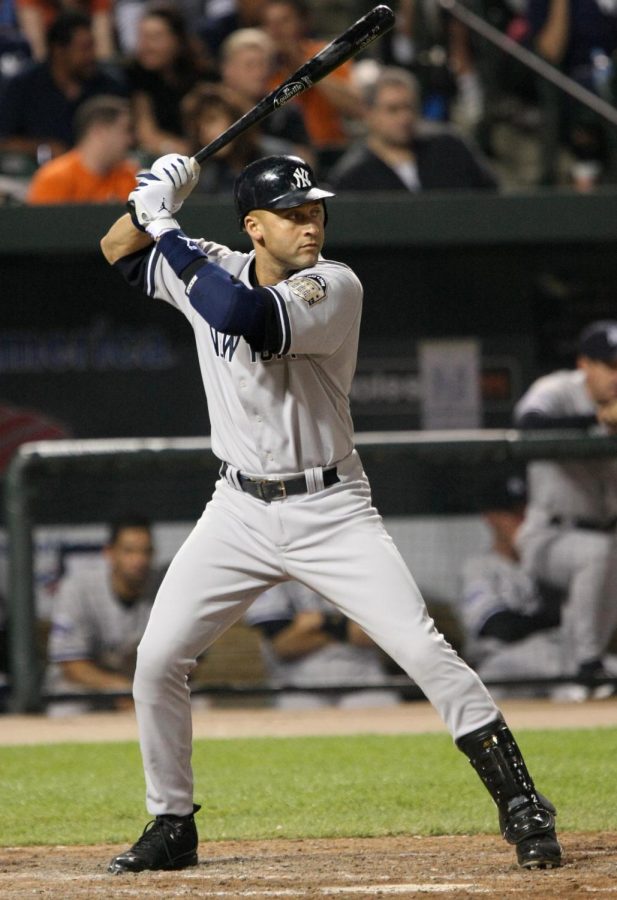The Jeter 5: The Stories Of the Five Players Selected Before Derek Jeter In The 1992 Draft.
December 14, 2020
I am sure that everyone who is reading this knows who Derek Jeter is. A 14 time All-star, 5 time Gold Glove, and 5 Silver Slugger award winner, Jeter has become a household name in the MLB. However, many scouts had doubts about Jeter going into the 1992 draft because he was coming straight out of Kalamazoo High School. But as the years went on, Jeter’s success only grew; After winning the World Series five times with the Yankees, those teams surely did regret not selecting him. He ended up falling to the number six pick, where the New York Yankees selected him, and his journey to becoming a baseball legend began. So now you may be wondering, who did those 5 other teams take with their first-round picks?
Well, with the first pick in the 1992 MLB Draft, the Houston Astros selected Phil Nevin, a third baseman out of California State Fullerton. Now, even with Jeter in this draft, Nevin was a no-brainer at number one. His extraordinary stats, which includes 184 RBIs and a .364 average at Cal State, and great performance in the College World Series made him an easy number one pick. However, the MLB did not work out nearly as well for him. His first five years in the MLB were mediocre, to say the least. However, on the four year stretch from 2000- 2004, he was above average with his most notable year in 2001 when he posted 41 home runs, collected 126 RBIs, and had an OPS of .976. While he made the All-Star Game that year, that was Nevin’s only selection in his career. While Phil Nevin provided MLB level play at third base during his career, he certainly did not live up to the standards of a number-one pick.
With the number-two pick, the Cleveland Indians selected Paul Shuey, a pitcher out of UNC. Shuey did not have a very notable career. In fact, this was a very risky pick considering that Shuey suffered a patella tendon rupture in 1991 when he was with North Carolina. This first injury started a series of injuries that plagued him throughout his MLB career. Despite having an above-average career ERA of 3.87 and a 45-28 record over 13 seasons, he never started enough games to consider him worthy of the number two pick.
With the number three pick, the Montreal Expos selected B.J Wallace, a pitcher coming from Mississippi State. Wallace was definitely the biggest bust of this bunch considering he never ended up playing a game in the MLB. He retired in 1997 while he was in the minors because he soon realized that he had very little chance of making it to the big leagues.
With the number four pick, the Baltimore Orioles selected Jeffrey Hammonds, an outfielder from Stanford, and he had another below-average career. Hammonds was a bit of a journeyman as he went from the Orioles to the Reds to the Rockies to the Brewers and then to the Giants only to end his career with the Washington Nationals. The only standout year in his career was 2000 when put up 24 home runs and 106 RBIs, landing himself a place on the roster for the All-Star game. However, one All-Star nomination pales in comparison to Jeter’s 14, and his below-average career was not what the Orioles were hoping for with their fourth pick.
With the fifth pick the Cincinnati Reds selected Chad Mottola, an outfielder out of the University of Central Florida. Like Hammonds, this was another bust. He barely scratched the MLB level, only starting in 59 games over 5 years and ending up with only 4 home runs and 12 RBIs during his major league career.
And finally, with the 6th pick, the New York Yankees selected Derek Jeter, a shortstop out of Kalamazoo High School. In retrospect, Jeter clearly was the best pick out of this draft. The Yankees liked what they saw in this young player back in 1992, and at the time they were surprised that he fell to the sixth pick in the draft.
In the end, the MLB draft is a gamble and the best player can be found in the first round or the fortieth round. For instance Hall of Famer Wade Boggs was picked in the seventh round and crazy enough soon to be Hall of Famer Albert Pujols was picked in the thirteenth round! This is what I think makes the MLB draft so unique, you are just as likely to find a star in the fifth round than you are in the first round, which is something you don’t see in any other sport. Going into the draft any of these aspiring young players could be the next star, you just never know when you are going to find the next Derek Jeter.


















